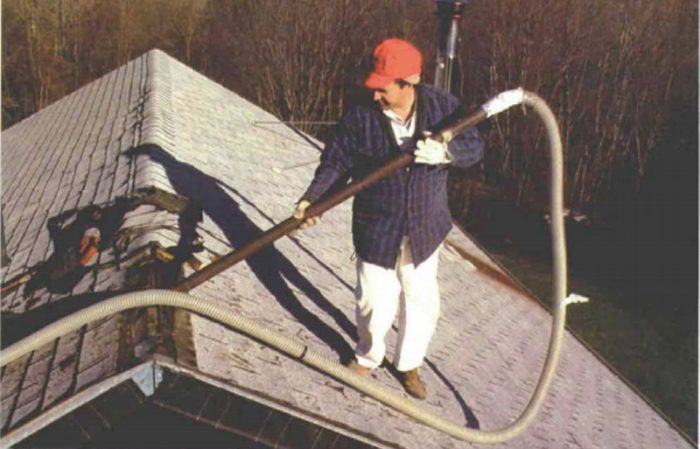Fixes for Damp, Moldy Houses
Drying the foundation and sealing air leaks make houses durable and healthy.

Synopsis: Moisture entering a house through the basement can find its way all the way to the attic, leading to mold and rot, peeling paint, and a variety of structural problems. The author outlines solutions, ranging from sealing heating ducts to cutting off basement water infiltration.
I recently responded to a frantic call from the owners of an opulently remodeled older home. The weather was subzero, and water dripping from the ceilings pinged in dozens of pots and pans throughout the house. The owners thought that ice dams were causing their roof to leak. They were wrong, though. Condensation was the problem.
The underside of the roof deck was solid mold. Dozens of recessed ceiling lights and a board ceiling in the living room channeled warm, moist air into the attic. Water from foundation leaks stood shoe-top deep in the basement. Moisture evaporated here, traveled though ceiling leaks to the attic and condensed on the cold roof. Sealing air leaks, drying the basement and installing a moisture barrier on its floor fixed the trouble.
As a weatherization contractor, I frequently repair damp, moldy houses. People call me to fix soaking, rotting roof decks, or a rotting exterior wall revealed during a remodeling project, or a cellar causing a stink through a house. Sometimes paint peels from walls, and brown mildew streaks indicate the location of wall studs. With no leaks in plumbing, roofing or siding, the problem is condensation that leads to the growth of fungus—mold and mildew.
Fungi are brutally territorial about their food supplies, and they produce powerful toxins to protect their turf. Their poison is aimed primarily at other microorganisms, but it also makes many people deathly sick inside their homes. Fungi inoculate every part of our world. They make life possible by breaking down dead-plant matter into soil. Unfortunately, our dwellings are built mostly from dead-plant matter, namely wood.
Fungi need lots of water to grow
Water constantly moves through walls, roofs and ceilings, mainly borne on air currents. It most often blows in as vapor, condenses, adheres to the wood fiber for a while, then diffuses out again. Every house gets wet and dries out in daily and seasonal cycles, and usually without harm.
The problems begin when the framing gets wet faster than it can dry. When wood reaches a moisture content of 30%, fungi start to grow wildly. Once begun, fungal destruction (or feasting, depending on your point of view) doesn’t stop until the wood’s moisture content falls back below 20%.
Five elements are required to generate harmful levels of condensation. There must be a source of water to load warm air with vapor and a cold surface where vapor can condense. Air passages must connect these two places. A source of pressure must be present to drive moist air down the air passages. Finally, a diffusion barrier must keep condensation from drying faster than it is deposited.
Eliminating anyone of the above elements will stop wetting. Doing all the easy work on two or three of the five elements can also stop wetting and is generally the simplest approach to fixing a damp, moldy house. As a practical matter, two of the five elements— condensing surfaces and diffusion barriers— can’t be helped.
For photos and more on how to keep water out of foundation walls, click the View PDF button below.


























